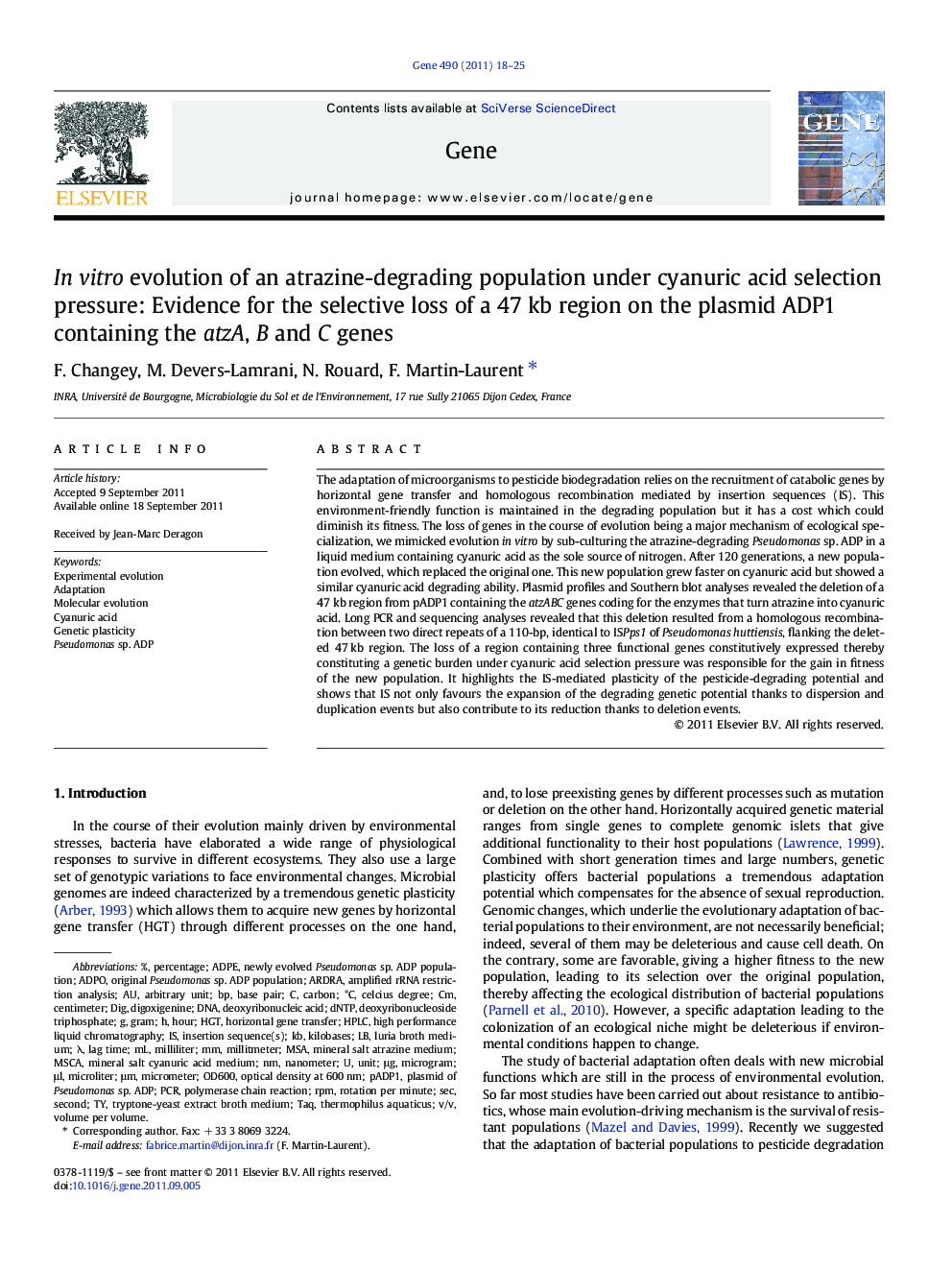| کد مقاله | کد نشریه | سال انتشار | مقاله انگلیسی | نسخه تمام متن |
|---|---|---|---|---|
| 2818237 | 1569851 | 2011 | 8 صفحه PDF | دانلود رایگان |

The adaptation of microorganisms to pesticide biodegradation relies on the recruitment of catabolic genes by horizontal gene transfer and homologous recombination mediated by insertion sequences (IS). This environment-friendly function is maintained in the degrading population but it has a cost which could diminish its fitness. The loss of genes in the course of evolution being a major mechanism of ecological specialization, we mimicked evolution in vitro by sub-culturing the atrazine-degrading Pseudomonas sp. ADP in a liquid medium containing cyanuric acid as the sole source of nitrogen. After 120 generations, a new population evolved, which replaced the original one. This new population grew faster on cyanuric acid but showed a similar cyanuric acid degrading ability. Plasmid profiles and Southern blot analyses revealed the deletion of a 47 kb region from pADP1 containing the atzABC genes coding for the enzymes that turn atrazine into cyanuric acid. Long PCR and sequencing analyses revealed that this deletion resulted from a homologous recombination between two direct repeats of a 110-bp, identical to ISPps1 of Pseudomonas huttiensis, flanking the deleted 47 kb region. The loss of a region containing three functional genes constitutively expressed thereby constituting a genetic burden under cyanuric acid selection pressure was responsible for the gain in fitness of the new population. It highlights the IS-mediated plasticity of the pesticide-degrading potential and shows that IS not only favours the expansion of the degrading genetic potential thanks to dispersion and duplication events but also contribute to its reduction thanks to deletion events.
► Cyanuric acid led to the selection of a newly evolved population derived from Pseudomonas sp. ADP, a bacterial strain able to mineralize the herbicide atrazine.
► Improved fitness of the newly evolved population was due to the selective loss of a 47 kb region from pADP1 by homologous recombination mediated by IS Pps1.
► It further indicates the tremendous genetic plasticity of atrazine-degrading bacterial population.
► This study supports expansion-reduction model for fast adaptation of microorganisms to pesticide biodegradation in the environment.
Journal: Gene - Volume 490, Issues 1–2, 15 December 2011, Pages 18–25